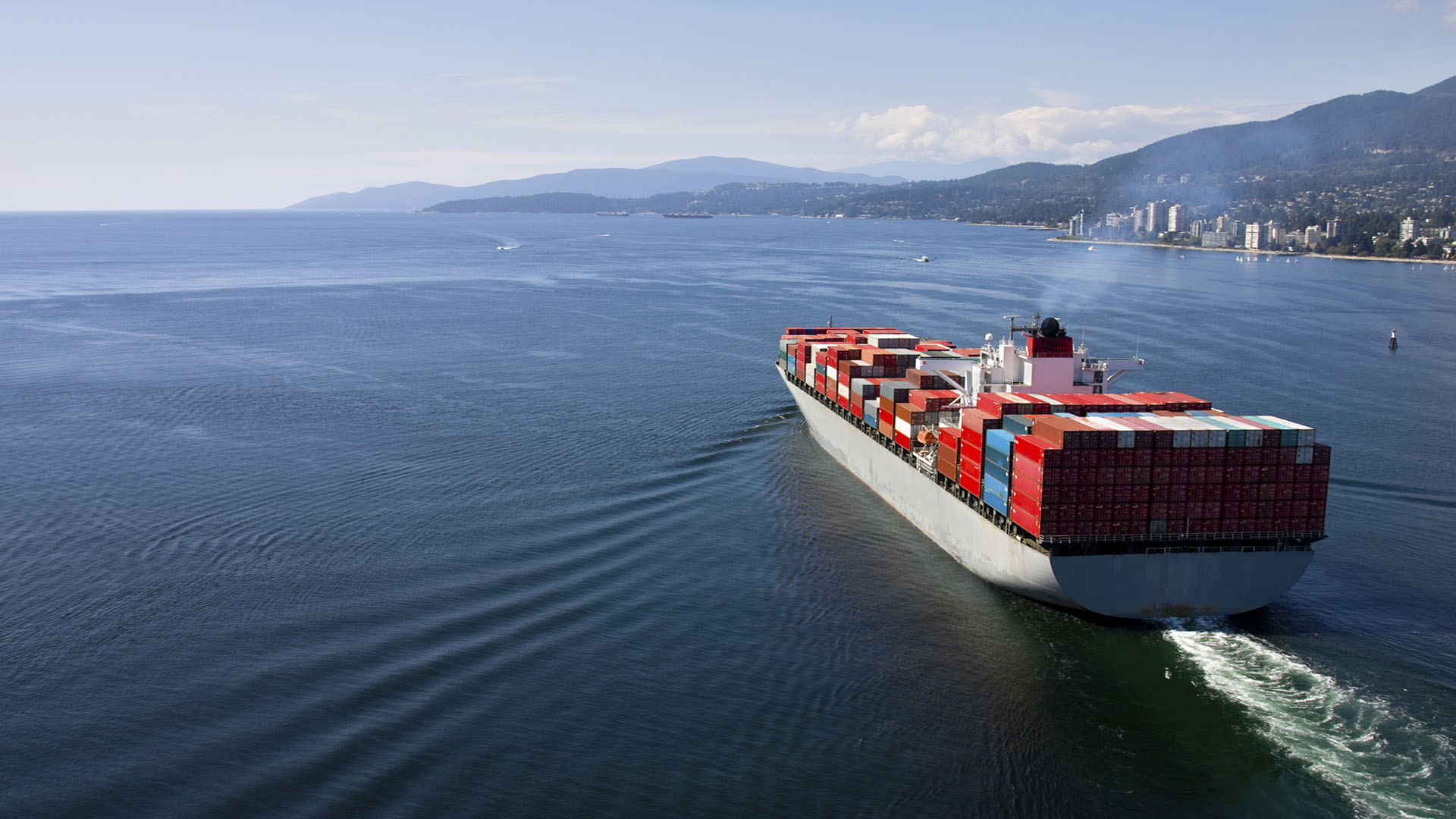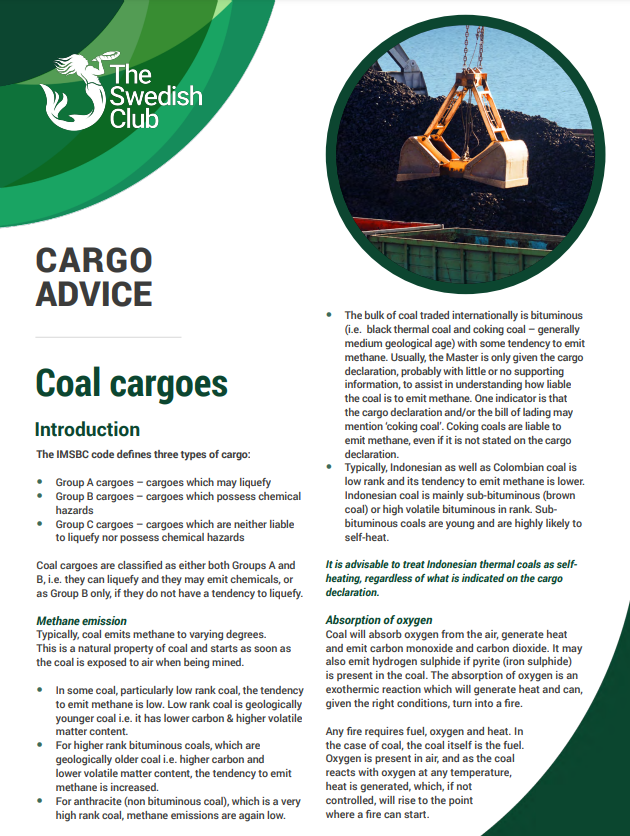
Coal
The IMSBC code defines three types of cargo:
- Group A cargoes – cargoes which may liquefy
- Group B cargoes – cargoes which possess chemical hazards
- Group C cargoes – cargoes which are neither liable to liquefy nor possess chemical hazards
Coal cargoes are classified as either both Groups A and B, i.e. they can liquefy and they may emit chemicals, or as Group B only, if they do not have a tendency to liquefy.
Methane emission
Typically, coal emits methane to varying degrees. This is a natural property of coal and starts as soon as the coal is exposed to air when being mined.
- In some coal, particularly low rank coal, the tendency to emit methane is low. Low rank coal is geologically younger coal i.e. it has lower carbon & higher volatile matter content.
- For higher rank bituminous coals, which are geologically older coal i.e. higher carbon and lower volatile matter content, the tendency to emit
methane is increased. - For anthracite (non bituminous coal), which is a very high rank coal, methane emissions are again low.
- The bulk of coal traded internationally is bituminous (i.e. black thermal coal and coking coal – generally medium geological age) with some tendency to emit methane. Usually, the Master is only given the cargo declaration, probably with little or no supporting information, to assist in understanding how liable the coal is to emit methane. One indicator is that the cargo declaration and/or the bill of lading may mention ‘coking coal’. Coking coals are liable to emit methane, even if it is not stated on the cargo declaration.
- Typically, Indonesian as well as Colombian coal is low rank and its tendency to emit methane is lower. Indonesian coal is mainly sub-bituminous (brown coal) or high volatile bituminous in rank. Subbituminous coals are young and are highly likely to self-heat.
It is advisable to treat Indonesian thermal coals as selfheating, regardless of what is indicated on the cargo
declaration.
Read more in the publication below

Coal
The IMSBC code defines three types of cargo: group A cargoes – cargoes which may liquefy, group B cargoes – cargoes which possess chemical hazards and group C cargoes – cargoes that are neither liable to liquefy nor possess chemical hazards. Coal cargoes are classified as either both Groups A and B, i.e. they can liquefy and they may emit chemicals, or as Group B only, if they do not have a tendency to liquefy.